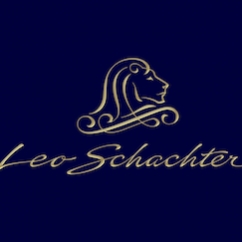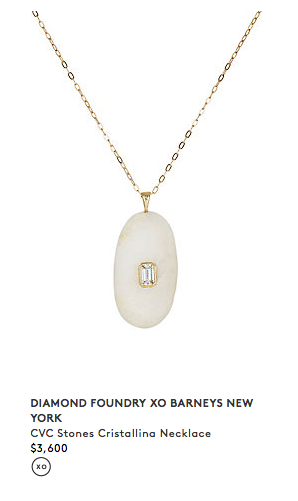Articles and News
NPD Research Shows Branded And Lab-Grown Diamonds Up; Watches, Designer Jewelry Struggling | June 14, 2017 (0 comments)

Las Vegas, NV—The jewelry industry is not alone in facing challenges in the retail and consumer marketplace. A presentation by the NPD Group during the JCK Las Vegas Show addressed global shifts in how consumers perceive and consume luxury goods.
Titled “The Retail Revolution: Understanding Shifts In The Luxury Market” and presented by diamond market research analyst Edahn Golan and NPD Group’s Desiree Hanson, the findings were based on NPD’s monthly data tracking of 3,950 jewelry stores in the United States. NPD’s panel includes jewelry stores across the price spectrum from luxury to popular price, but excludes department stores, e-commerce, and other multi-category retail channels. In an exclusive interview with The Centurion, Golan and Hanson explored the implications behind the numbers.
In 2016, the U.S. diamond market totaled $9 billion at wholesale cost for polished goods. The total retail value of diamonds sold through specialty jewelers (including independents and chains) was $12.2 billion. Average wholesale cost per carat was $948 and average retail price per carat was $1,279, for a gross and retail margin of $332, or 26%.
NPD’s data also includes: how many stones sold were certified, what qualities, natural or lab-grown, when purchased, from whom and how much, how long they were in inventory prior to sale, whether they were memo or asset goods, and the different categories' margins on out-the-door pricing. “If a retailer bought a stone for $1,000 and marks it at $1,300 but tells his associate he can go down to $1,150, and the associate sells it for $1,200, we have all those numbers,” Golan said.

Edahn Golan
Oh, oval! Some style trends are indeed more than just an isolated blip. Golan says though still the most popular choice, there’s a noticeable decline in consumer demand for rounds, and a sharp decline in demand for princess cuts. Pears, meanwhile, are up 3% and demand for ovals is rocketing—up 54% just in the first quarter of 2017 year-on-year against the same period of 2016. The majority are between 0.70-1.19 carats, and from 2.0-2.99 carats.
“Another interesting trend is the rise of diamond brands,” says Golan. In 2016, brands--such as Forevermark, Hearts On Fire, Leo Schachter (image at top of page), Canadamark, and more--accounted for 5.5% of total goods sold, he says. “The interesting thing about these goods is they have appeal to both retailer and consumer. From the retailer perspective, it’s bigger margin and more money through the register, and second, they sell faster.” Non-branded stones have a turn of 1—1/2 years; branded stones turn in 15 months, he says.
“We’ve been tracking branded for a while and we know this is growing trend.” In Q1 2017, branded diamonds had 8.7% share of market by total carat weight (not dollar value).
“The consumer perspective is that a brand gives assurances. They’re more confident and the product has a story. It does all those things we’ve been saying for years the diamond industry needs.” Furthermore, he added, despite Millennials’ purportedly telling market researchers they’re too jaded to buy into advertising, they are in fact buying a lot of branded goods in general. “By extension, we are assuming this goes into branded diamonds,” he said.
Though still a very small part of the market, lab-grown diamonds are gaining share quickly. By carat weight, lab-grown stones accounted for 1.4% of the total diamond market in 2016—still minuscule, but three times their share two years ago. The majority are smaller and lighter goods.
By channel, most of the lab-grown sales are at price-point retailers, followed by chains. “We hardly see them in guild or luxury stores,” says Golan. But “hardly” isn’t “never,” he says. “What’s interesting is if you look over time, popular price point stores had 83% of the lab-grown market share. Now it’s down to 80%, because luxury stores are up from 1% to 4% share of lab-grown sales.” More worrisome, Golan believes undisclosed synthetics are present in the market.

The majority of synthetic diamond sales still are at low-end jewelers, but luxury stores are beginning to add them as well. Here, a pendant featuring a lab-grown diamond from Diamond Foundry at Barneys New York.
Desiree Hanson, director of luxury retail client development, reviewed NPD’s findings on the luxury retail and watch markets.
“We’re seeing a restructuring of retail as external forces are driving a decline in the luxury market and consumers’ mindsets have changed,” she told The Centurion. In 2016, high-end branded jewelry, both high-end and low-end watches, consumer electronics, accessories, and video game sales declined. Categories that saw growth in 2016 were footwear, food service, travel, home improvement, and beauty.

Desiree Hanson
Home improvement especially is rocketing. “Staying in is the new going out,” Hanson said.
Renowned trend forecaster Faith Popcorn invented the word “cocooning” in 1981 to define a trend toward staying home. Popcorn says Americans are now so fearful that the trend has surpassed cocooning and is more like “bunkering,” following repeated events like mass shootings at home and terrorist attacks abroad. The Danish have a word for it—hygge, pronounced “hyuge,” which means the need or desire to be comforted, and it has had a “hyuge” impact on luxury spending, says Hanson. “It's the experiences that people are still clinging to.” Despite the love of home, travel is up and dining out is up, says Hanson. But so is dining in, with the rising popularity of gourmet food and grocery delivery services like Blue Apron and Grub Hub.
“Also what is playing into this is the sharing economy,” says Hanson. Consumers are not committing to ownership but are flocking to rental sites like Rent The Runway. “You can do it with clothes, rent a handbag, stay at an Airbnb, rent a boat, et cetera. You get a sense of a luxury lifestyle, but you don't have to commit to ownership and Millennials love that.” The watch market is starting to enter the rental arena with sites like Eleven James and others, where for $149/month, you can rent a Rolex for a few weeks, says Hanson. It’s a fairly new phenomenon and while NPD has observed it, it is not tracking it—yet.
There’s also a sharp increase in vintage, resale, and consignment shopping. “Sites like The RealReal, Tradesy, Poshmark, etc. all have apps, and when consumers say ‘I want a branded X,’ they buy it there,” says Hanson.
But what luxury independents are keeping a wary eye on is high-end branded jewelry. NPD is tracking 13 brands so far, says Hanson, and has observed independent jewelers’ sales of brands like Roberto Coin, David Yurman, Marco Bicego, and Ippolita down about 7% in 2016—and down double-digits in the first quarter of 2017. (Editor’s note: NPD’s figures do not include sales at department stores like Saks Fifth Avenue, Neiman Marcus, Nordstrom, etc. The Centurion chatted with a few high-end jewelers in Las Vegas and asked about brand sales. All reported silver brands are down—David Yurman and John Hardy in particular—but gold brands, including Marco Bicego, were still strong for these stores. Anything that could be layered and/or worn with casual and athleisure clothing is selling, they said.)
Watches are taking a massive hit, says Hanson. NPD’s research revealed a 7% decline in watch sales by dollar value and 14% by units in 2016, the lowest unit sales in four years, she said. In the first quarter of 2017, NPD’s research is showing similar declines. Dollar sales are down another 7% year on year, but it’s a slower decline than last year when Q1 sales were down 9% over the same period in 2015. (Figures include department stores, which posted the sharpest declines in watch sales.) NPD saw a spike in watch sales in the $10,000 to $25,000 range (men’s up ~10%; women’s up ~2-3%), but declines in watches over $25,000 and a sharp decline in those under $300.
Asking a consumer panel with more than one million respondents, “do you wear a watch?” and “how often?”, fewer than one-third of respondents (31%) said “daily.” 10% said “occasionally,” and 6% said only on special occasions.
Rolex continues to be impervious, however. Hanson says of the top 10 brands by MSRP, Rolex is the only brand showing growth; it was up 6% in 2016 and gained four points of market share at the cost of other brands’.
The bright spot NPD observed in the watch market are new contemporary brands making a luxury-looking product at a more accessible price point, such as Daniel Wellington and Shinola. “Consumers love it, it looks great, the story is awesome, and it’s made in America,” Hanson told The Centurion.
NPD’s findings in jewelry and watch sales reflect a selective indulgence, says Hanson. Athleisure and activewear sales are up, and Americans are not dressing up like they used to. At a cocktail party, it’s common to see men wearing jeans with a blazer and women dressing up their jeans with a fancy top and designer shoes. All are trends influencing traditional retail in the market and what we’re seeing happen in those channels, Hanson says.
“I don't think the consumer has figured out a way to piece together high-end jewelry with yoga pants. It’s affecting retail, affecting luxury.”







